First Impressions of Articulate’s AI Assistant
Why AI Built for eLearning Changes Everything
AI is everywhere these days — from writing emails to generating images, creating videos, and more. We all know tools like ChatGPT, Midjourney, DALL·E, Grammarly, Synthesia, and plenty more. They’ve quickly become part of our daily workflows — or at least, they have in mine! But if you’ve ever tried using these tools to help build an eLearning course, you’ve probably noticed something… They’re smart — but they don’t really get what we do.
That’s why I was both excited and curious when I heard that Articulate was introducing an AI Assistant, built right into Storyline and Rise. Finally, an AI tool designed specifically for instructional designers and eLearning developers. I’ve been working with Articulate tools for over 14 years, and like many of you, I’m always looking for ways to speed up my workflow without sacrificing creativity or quality. So the big question was:
Could this AI Assistant actually help me design or improve my courses — in a way that generic AI tools can’t?
Spoiler alert: It can. And it did.
This is the first post in a series where I’ll share how Articulate’s AI Assistant is changing the way I approach course development — making everyday tasks faster, smoother, and honestly, a bit more fun. So let’s take a closer look at why having AI built specifically for eLearning really makes a difference.
Why Use Articulate’s AI Assistant Instead of Other AI Tools?
Like many of you, I’ve used my fair share of AI tools — from ChatGPT for brainstorming to DALL·E for generating creative visuals. These tools are great, but they’re generalists. They don’t know (or care) that I’m building an eLearning course. That’s where Articulate’s AI Assistant stands out.
It’s designed inside Articulate Storyline and Rise, for people like us — instructional designers, eLearning developers, and content creators. No copy-pasting between tools, no explaining to a chatbot what a “learning objective” is every single time.
Here’s why I immediately saw the benefit of having AI built right into the tools I already use:
-
It understands context.
You’re not starting from scratch with every prompt. The AI Assistant knows you’re working within slides, quizzes, scenarios, and learning objectives. -
It fits seamlessly into your workflow.
No need to bounce between apps or worry about formatting. You stay in Storyline or Rise, focused on creating — and the AI is right there when you need a boost. -
It’s tailored for eLearning tasks.
Whether you’re drafting instructional text, generating quiz questions, or adjusting tone for different audiences, it’s built to support tasks we handle every day.
Other AI tools are powerful, but they weren’t made for eLearning. Articulate’s AI Assistant feels like it was built by people who understand the little challenges that come with designing courses — and that makes all the difference.
What Impressed Me Right Away
I went in with low expectations — I mean, AI is cool, but it’s not magic, right? Well, after just a few prompts, I found myself genuinely impressed.
Articulate’s AI Assistant is fast and simple.
No manuals, no guesswork. You type, it helps. It felt less like learning a new feature and more like having a colleague nearby to bounce ideas off.
Articulate’s AI Assistant gets you moving.
The hardest part of creating content is often just getting started. The AI Assistant hands you a decent draft so you’re not stuck wondering how to begin. From there, it’s all about tweaking.
Articulate’s AI Assistant understands eLearning.
This isn’t some generic writing tool — it gets that you’re creating learning content. Whether it’s suggesting learning objectives or drafting quiz questions, it speaks the language of eLearning.
By the end of my first session, I realized this tool isn’t just about saving time — it’s about keeping me in that productive flow state. Less overthinking, more doing.
Wrapping Up — And What’s Next
After just a short time using Articulate’s AI Assistant, I knew it was going to be part of my daily routine. It’s not here to replace creativity — it’s here to remove those little hurdles that can slow us down. No more blank slides. No more overthinking simple tasks.
And the best part? I’m only scratching the surface. In my next post, I’ll show you how I’m using the AI Assistant to speed up writing — from slide content to quizzes and even branching scenarios. That’s where things get really interesting.
Have you given the AI Assistant a try yet? I’d love to hear how it’s working for you — or if you’re still wondering how to fit it into your workflow. Drop a comment below and let’s share ideas!
Stay tuned — more AI-powered tips coming soon!
First Impressions of Articulate’s AI Assistant
Why AI Built for eLearning Changes Everything
AI is everywhere these days — from writing emails to generating images, creating videos, and more. We all know tools like ChatGPT, Midjourney, DALL·E, Grammarly, Synthesia, and plenty more. They’ve quickly become part of our daily workflows — or at least, they have in mine! But if you’ve ever tried using these tools to help build an eLearning course, you’ve probably noticed something… They’re smart — but they don’t really get what we do.
That’s why I was both excited and curious when I heard that Articulate was introducing an AI Assistant, built right into Storyline and Rise. Finally, an AI tool designed specifically for instructional designers and eLearning developers. I’ve been working with Articulate tools for over 14 years, and like many of you, I’m always looking for ways to speed up my workflow without sacrificing creativity or quality. So the big question was:
Could this AI Assistant actually help me design or improve my courses — in a way that generic AI tools can’t?
Spoiler alert: It can. And it did.
This is the first post in a series where I’ll share how Articulate’s AI Assistant is changing the way I approach course development — making everyday tasks faster, smoother, and honestly, a bit more fun. So let’s take a closer look at why having AI built specifically for eLearning really makes a difference.
Why Use Articulate’s AI Assistant Instead of Other AI Tools?
Like many of you, I’ve used my fair share of AI tools — from ChatGPT for brainstorming to DALL·E for generating creative visuals. These tools are great, but they’re generalists. They don’t know (or care) that I’m building an eLearning course. That’s where Articulate’s AI Assistant stands out.
It’s designed inside Articulate Storyline and Rise, for people like us — instructional designers, eLearning developers, and content creators. No copy-pasting between tools, no explaining to a chatbot what a “learning objective” is every single time.
Here’s why I immediately saw the benefit of having AI built right into the tools I already use:
-
It understands context.
You’re not starting from scratch with every prompt. The AI Assistant knows you’re working within slides, quizzes, scenarios, and learning objectives. -
It fits seamlessly into your workflow.
No need to bounce between apps or worry about formatting. You stay in Storyline or Rise, focused on creating — and the AI is right there when you need a boost. -
It’s tailored for eLearning tasks.
Whether you’re drafting instructional text, generating quiz questions, or adjusting tone for different audiences, it’s built to support tasks we handle every day.
Other AI tools are powerful, but they weren’t made for eLearning. Articulate’s AI Assistant feels like it was built by people who understand the little challenges that come with designing courses — and that makes all the difference.
What Impressed Me Right Away
I went in with low expectations — I mean, AI is cool, but it’s not magic, right? Well, after just a few prompts, I found myself genuinely impressed.
Articulate’s AI Assistant is fast and simple.
No manuals, no guesswork. You type, it helps. It felt less like learning a new feature and more like having a colleague nearby to bounce ideas off.
Articulate’s AI Assistant gets you moving.
The hardest part of creating content is often just getting started. The AI Assistant hands you a decent draft so you’re not stuck wondering how to begin. From there, it’s all about tweaking.
Articulate’s AI Assistant understands eLearning.
This isn’t some generic writing tool — it gets that you’re creating learning content. Whether it’s suggesting learning objectives or drafting quiz questions, it speaks the language of eLearning.
By the end of my first session, I realized this tool isn’t just about saving time — it’s about keeping me in that productive flow state. Less overthinking, more doing.
Wrapping Up — And What’s Next
After just a short time using Articulate’s AI Assistant, I knew it was going to be part of my daily routine. It’s not here to replace creativity — it’s here to remove those little hurdles that can slow us down. No more blank slides. No more overthinking simple tasks.
And the best part? I’m only scratching the surface. In my next post, I’ll show you how I’m using the AI Assistant to speed up writing — from slide content to quizzes and even branching scenarios. That’s where things get really interesting.
Have you given the AI Assistant a try yet? I’d love to hear how it’s working for you — or if you’re still wondering how to fit it into your workflow. Drop a comment below and let’s share ideas!
Stay tuned — more AI-powered tips coming soon!

